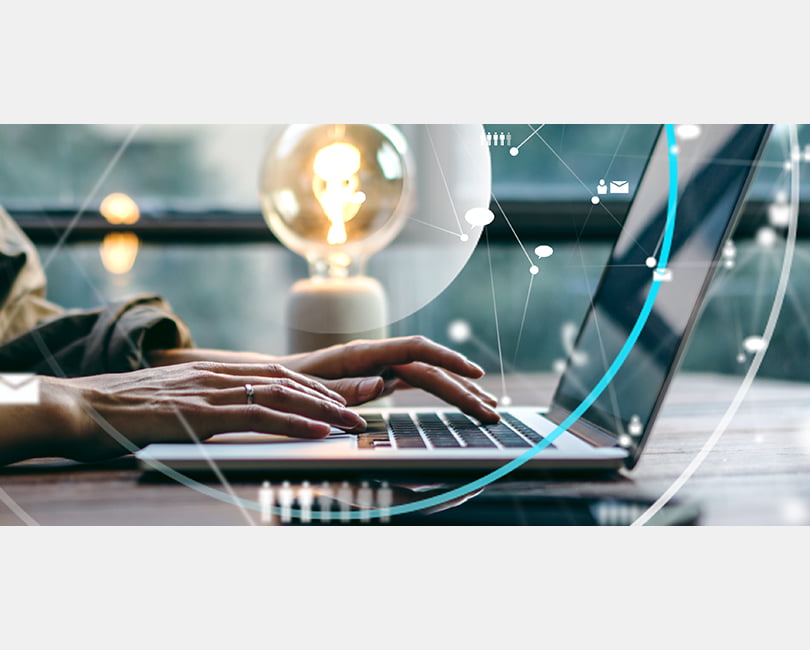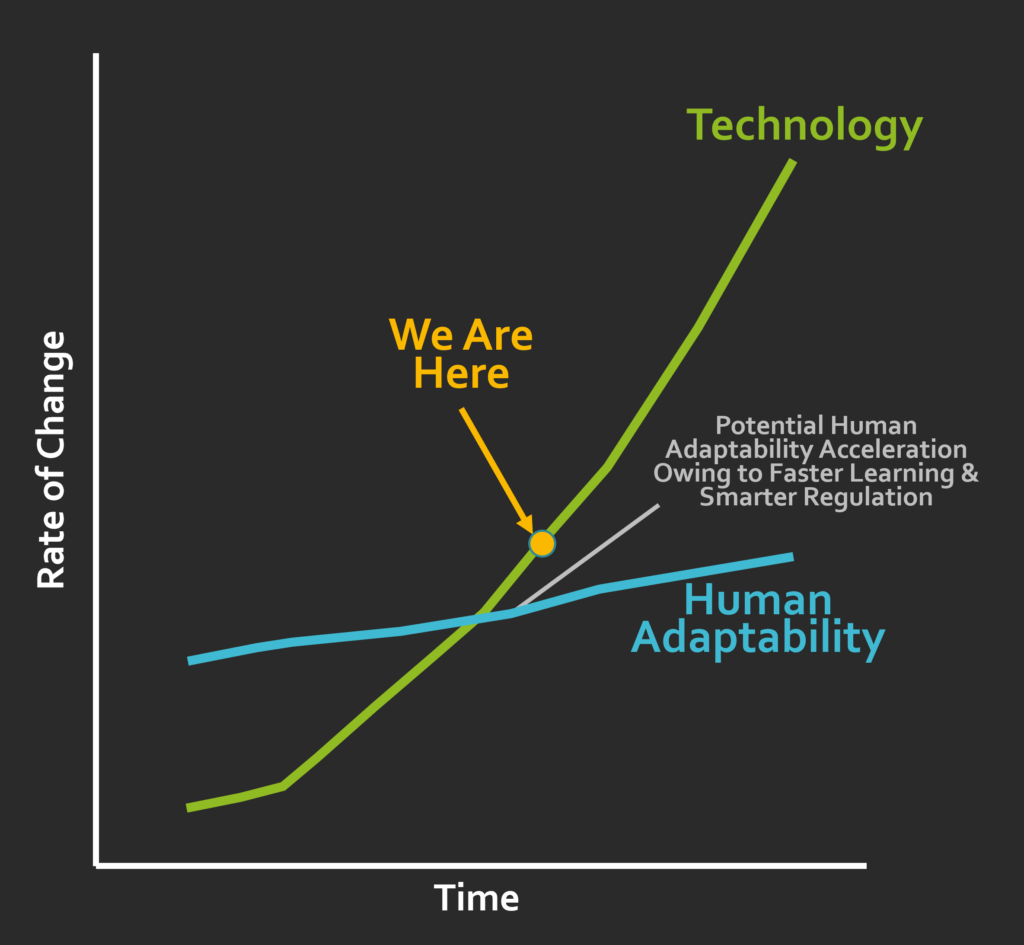Virtual Business Development: Disruptions Unleash Work Opportunities

Before the global pandemic required companies to rethink critical aspects of their go-to-market strategies, a shift, driven by a combination of changing buying behaviors and evolving demographics, was already well underway.
What was this shift? A move toward increasing reliance on “virtual” – or non-traditional – business development approaches.
COVID-19 didn’t disrupt the shift as much as it put the accelerator to it.
Think of how your buying behaviors have changed over the past decade. The adoption of e-commerce is well documented, but perhaps less attention has been given to how we’ve retrained our minds when seeking out products and services for potential purchase. Contrary to popular belief, brick-and-mortar retail is not dead. Amazon is in talks to take over vacant department stores like Sears and JC Penney to create combination last-mile distribution centers and/or grocery stores. This initiative was driven by consumers’ conducting research and ordering products online without the need to visit traditional brick-and-mortar stores. Before long, 3-4 days was an unacceptable amount of time to wait for a purchase, so Amazon Prime gave us two-day delivery. Then one-day delivery, or even same-day delivery, and as consumers, we liked it. Walmart, Target, Best Buy, grocery stores, and other retailers began rethinking their retail delivery model, becoming last-mile fulfillment centers as much as retail showrooms. Target launched an ordering app and same-day delivery service before COVID-19; the pandemic expedited its adoption. Just yesterday, I used the Target app to check inventory on a product, then went to a very busy store to purchase it, not even waiting for the same-day delivery.
Disruptive Trends & New Approaches
Many of the traditional business development techniques are akin to brick-and-mortar retail. They are still an essential part of generating work, but how we use these tools continues to evolve, converging with newer technologies and changing buying behaviors.
Business developers and seller-doers were using telephones, email, and LinkedIn long before the pandemic. They had tools like Zoom and WebEx for virtual meetings before the pandemic. They also hosted webinars before the pandemic to generate interest and inbound leads. The industry was already utilizing these tools. However, the pandemic made everyone sharpen their skillsets while learning new tactics and approaches.
You may be familiar with this graphic, from Mary Meeker’s annual Technology Trends report and Thomas Friedman’s book, Thank You for Being Late:

Technology is passing us by, and we’re struggling to keep up. The rate of technical change is exponential, meaning that we will continue to fall further and further behind unless we make proactive efforts to understand, learn, and adapt.
This graphic also applies to business development if you change Human Adaptability to Firm Adaptability. Have your sales and marketing approaches kept up with the rapid advancements in technology? Or have you even been able to stay abreast of your competitors? Beyond the disruption that technology delivers, workforce demographics are also changing – at both our firms and clients.
In the early 2010s, I sat on a CEO call hosted by the Society for Marketing Professional Services (SMPS) Foundation. The question asked of chief executives was simple: “What significant disruptions are happening that you don’t currently feel prepared to address?”
Of the ideas thrown out during that call, one that stood out to me was the CEO of a national planning and design firm, who somewhat exasperatingly exclaimed: “I have Baby Boomer business developers calling on Millennial decision-makers, and it is just not working.”
Fast forward a few years, and we’re seeing 10,000 Baby Boomers turn 65 every single day. Within three years, that will jump to 12,000. The workplace is changing, and the Millennial generation is already the largest in the workforce. Furthermore, the oldest members of Generation Z are graduating college or already in the workforce, and by 2025 the Millennial and Gen Z generations will represent almost two-thirds of the workforce.
What worked yesterday won’t work tomorrow.
On the one hand, Baby Boomers and Gen Xers have evolved the way they make purchasing decisions as consumers, and they’ve come to expect similar decision-making processes for business-to-business transactions. On the other hand, Millennials are now in decision-making roles, and they’ve never even experienced yesterday’s approaches to decision making and business development.
My first AEC industry job entailed typing project descriptions on Standard Form 255 templates and then photocopying them in response to solicitations published in the yellow, text-packed Commerce Business Daily. The Federal Government used this mechanism to announce project opportunities before the launch of FedBizOpps in 2001 (which has since been phased out). Back then, email was in its infancy, so business development required a telephone. We didn’t have a company website because we didn’t even know what a website was. Social media? Not even in the realm of most people’s thinking back then. We did attend trade shows and conferences, society meetings, write articles for publication, and deliver presentations to different audiences (using 35MM slides or overhead projectors, of course). At the same time, we had ammonia-based blueprint machines and wash-off stations on the operations side as companies were just beginning to experiment with AutoCAD.
Jack of All Trades; Master of Many
Looking back on the early 1990s compared to now, so much has changed. Indeed, there are myriad new tools that we have added to our toolbox, but one of the biggest challenges with these new tools is that one size never fits all. Just because we’re on LinkedIn – and we certainly should be – doesn’t mean that all our clients will be. Just because we publish a blog doesn’t mean that our prospects will read it. Just because we try to schedule a Zoom meeting doesn’t mean there’s a willing audience on the other side of the screen.
The key takeaway here is that changing technologies and demographics require anyone involved with business development to commit to:
- Continuous Learning to not only understand newer approaches and techniques but also to continually elevate the business development skillset
- Agility and Personalization to try new approaches while being willing to pivot away from tactics that may not work for a specific prospect
- Knowledge Sharing to pass on what you’ve learned with your colleagues – both the academic knowledge (this is what the technique is) and lessons learned (this is how it worked in the real world)
Regardless of when the pandemic subsides and things settle into a new normal, the reality is that we’ve proven that virtual business development works. This new standard will undoubtedly require that we continue utilizing these approaches, as evidenced by what is being called the Great Resignation. Firms are embracing a permanent remote or hybrid workforce to combat the mass exodus of employees who are not interested in working for a company that does not offer remote work options.
Brick and mortar stores are still an essential part of retailing, just like traditional sales tools are still crucial for business development. But the model for both has changed, requiring strategies that take advantage of both the time-tested conventional approaches and newer innovations to drive success.
How are your virtual business development skills? Do you have the knowledge base you need to thrive both online and off? Check out the Stambaugh Ness webinar, “Developing Business Virtually,” to learn practical approaches for architecture, engineering, construction, environmental, and related firms.



